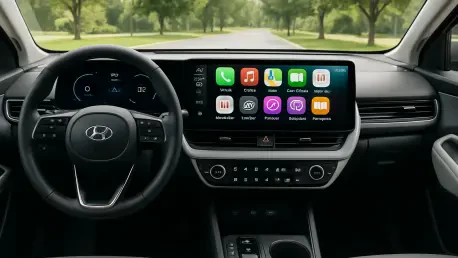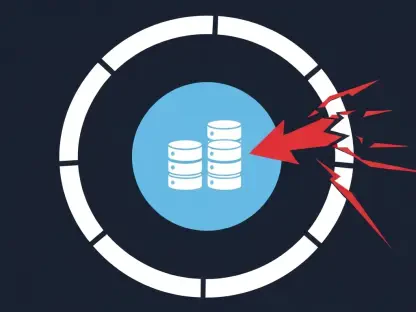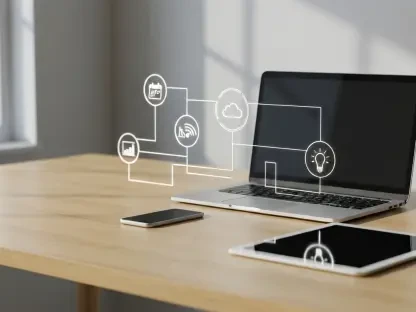I’m thrilled to sit down with Oscar Vail, a renowned technology expert whose insights into emerging fields like quantum computing, robotics, and open-source projects have made him a trusted voice in the industry. Today, we’re diving into the exciting world of automotive tech, focusing on Hyundai’s upcoming Ioniq 3 and its integration of Apple CarPlay Ultra. Our conversation explores how this compact electric vehicle fits into Hyundai’s lineup, the significance of bringing advanced infotainment to more affordable cars, and the technical innovations that could make the Ioniq 3 a game-changer for everyday drivers.
How did Hyundai come to the decision to integrate Apple CarPlay Ultra into a more budget-friendly electric vehicle like the Ioniq 3?
Hyundai has been on a mission to democratize cutting-edge technology in the EV space, and integrating Apple CarPlay Ultra into the Ioniq 3 is a bold step in that direction. From what I’ve gathered, their strategy is driven by a desire to stand out in the competitive compact EV market. By partnering with Apple to bring this advanced system to a more accessible price point, they’re not just catering to tech-savvy buyers but also setting a new standard for what drivers can expect, even in affordable vehicles. It’s a smart move to future-proof their lineup and appeal to a broader audience.
What sets Apple CarPlay Ultra apart from the standard CarPlay in terms of enhancing the driver’s experience?
Apple CarPlay Ultra takes connectivity to another level compared to the standard version. While regular CarPlay mirrors your iPhone apps on the car’s display, Ultra offers deeper integration with the vehicle’s own systems. It allows automakers like Hyundai to create custom themes and interfaces tailored to the car’s design, making the experience feel more seamless and intuitive. Plus, it supports more dynamic interactions, like controlling specific car functions directly through the interface, which elevates both convenience and safety for drivers.
Where does the Ioniq 3 fit within Hyundai’s electric vehicle lineup, especially compared to models like the Inster and Kona EVs?
The Ioniq 3 is positioned as a compact EV that slots neatly between the smaller Inster and the slightly larger Kona EV. It strikes a balance in terms of size, making it ideal for urban drivers who need something agile yet practical. Feature-wise, it’s expected to borrow some of the premium tech from higher-end Ioniq models while keeping costs down, which makes it a sweet spot for Hyundai in terms of accessibility and innovation. It’s likely to offer a more robust feature set than the Inster while being a bit more budget-conscious than the Kona.
Who do you think Hyundai is targeting with the Ioniq 3 in terms of drivers or buyers?
Hyundai seems to be aiming at a diverse group with the Ioniq 3, primarily younger, tech-savvy urban dwellers who prioritize connectivity and sustainability without breaking the bank. Think first-time EV buyers, small families, or commuters looking for an efficient, stylish ride with modern infotainment perks. By offering advanced tech like CarPlay Ultra in a compact package, they’re also likely appealing to those who might have previously considered gas-powered alternatives in this price range but are now ready to make the switch to electric.
Why is it significant that a more affordable car like the Ioniq 3 will feature CarPlay Ultra, especially when it’s currently found in high-end vehicles like luxury SUVs?
It’s a big deal because it breaks the mold of advanced infotainment being exclusive to luxury vehicles with hefty price tags. Until now, CarPlay Ultra has been something you’d only find in premium models, often costing upwards of $100,000. Bringing it to the Ioniq 3 signals a shift toward making top-tier tech accessible to the average driver. It’s a statement that you don’t need to splurge on a high-end car to enjoy a sophisticated, connected driving experience, and it could push other manufacturers to follow suit.
Can you break down the rumored battery options for the Ioniq 3 and how they might impact the vehicle’s range?
Based on the latest reports, the Ioniq 3 is expected to offer two battery options: a 58.3kWh pack and a larger 81.4kWh one. These are projected to deliver a WLTP range of about 260 miles and 365 miles, respectively. The smaller battery would suit city drivers or those with shorter commutes, while the larger option caters to folks who need more range for longer trips or just want the peace of mind of fewer charging stops. These capacities align well with the compact EV segment, offering competitive ranges that can rival or exceed some gas-powered counterparts.
What are your thoughts on the Ioniq 3’s expected performance, particularly the rumored 0-62 mph sprint time of under eight seconds?
A 0-62 mph time of under eight seconds is quite impressive for a compact EV in this price bracket. It suggests that Hyundai isn’t just focusing on efficiency but also on delivering a fun, responsive driving experience. For a car aimed at urban and suburban drivers, this kind of acceleration means quick merges onto highways or zipping through traffic with ease. It shows that EVs, even more affordable ones, can pack a punch and dispel the myth that electric cars are sluggish compared to traditional engines.
How does the 400-volt charging system in the Ioniq 3 affect its practicality for everyday use?
The 400-volt charging system in the Ioniq 3 is a practical choice for a compact EV, though it’s not as fast as the 800-volt systems found in some premium models like the Ioniq 5. It still supports decent charging speeds, likely allowing for a full charge in a reasonable time at public stations or overnight at home. For most drivers, especially those in urban areas with access to standard chargers, this setup strikes a good balance between cost and convenience. It keeps the car’s price down while ensuring charging isn’t a major hassle.
How is Hyundai approaching software updates and customization for the Ioniq 3 over its lifespan?
Hyundai is embracing a modern approach with the Ioniq 3, focusing on over-the-air software updates to keep the car’s systems fresh throughout its life. This means owners won’t be stuck with outdated tech a few years down the line, as updates can roll out much like they do for smartphones. Customization is also a key focus, with the ability for both Hyundai and drivers to tweak the infotainment system with apps and services. It’s a shift toward treating cars more like connected devices, which is a huge leap from the static systems of the past.
What’s your forecast for the future of advanced infotainment systems like CarPlay Ultra in more affordable vehicles?
I’m optimistic that we’re on the cusp of a major trend where advanced infotainment systems like CarPlay Ultra become standard even in budget-friendly cars. As technology costs come down and partnerships between automakers and tech giants grow, we’ll likely see these systems trickle down to nearly every segment within the next five to ten years. It’s not just about luxury anymore; it’s about enhancing safety, convenience, and connectivity for all drivers. Hyundai’s move with the Ioniq 3 could be the catalyst that accelerates this shift, pushing competitors to innovate or risk being left behind.









